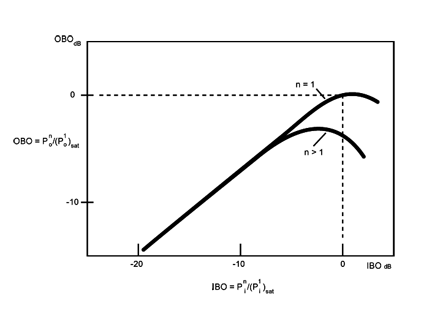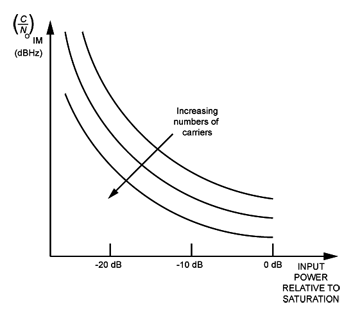VariableGainAmplifier Class |
AGI.Foundation.InfrastructureDefinitionalObject
AGI.Foundation.Communications.SignalProcessingSignalProcessor
AGI.Foundation.Communications.SignalProcessingAmplifier
AGI.Foundation.Communications.SignalProcessingVariableGainAmplifier
Namespace: AGI.Foundation.Communications.SignalProcessing
Assembly: AGI.Foundation.Communications (in AGI.Foundation.Communications.dll) Version: 25.2.423.0 (25.2.423.0)
The VariableGainAmplifier type exposes the following members.
| Name | Description | |
|---|---|---|
| VariableGainAmplifier | Initializes a new instance. | |
| VariableGainAmplifier(SignalProcessor) |
Initializes a new instance from the given signal input.
| |
| VariableGainAmplifier(VariableGainAmplifier, CopyContext) | Initializes a new instance as a copy of an existing instance. | |
| VariableGainAmplifier(SignalProcessor, Double, Double, Double, Double) |
Initializes a new instance from the given signal input, saturated input power, saturated output power, noise factor, and reference temperature.
| |
| VariableGainAmplifier(SignalProcessor, Double, Double, Double, Double, IListVariableGainAmplifierBackoffCurves) |
Initializes a new instance from the given signal input, saturated input power, saturated output power, noise factor, reference temperature, and
back-off curves list.
|
| Name | Description | |
|---|---|---|
| BackoffCurvesList |
Gets the list of back-off curves.
| |
| InputSignalProcessor |
Gets or sets the signal processor which produces the set of signals which this processor modifies.
(Overrides SignalProcessorInputSignalProcessor.) | |
| IsFrozen |
Gets a value indicating whether this object is frozen. A frozen object cannot be modified and an
ObjectFrozenException will be thrown if an attempt is made to do so.
(Inherited from DefinitionalObject.) | |
| NoiseFactor |
Gets or sets the noise factor representing the ratio of the NoiseTemperature
to ReferenceTemperature plus 1
(i.e. NoiseFactor = NoiseTemperature/ReferenceTemperature + 1).
(Inherited from Amplifier.) | |
| NoiseTemperature |
Gets the noise temperature of the amplifier, in kelvin.
(Inherited from Amplifier.) | |
| ReferenceTemperature |
Gets or sets the reference temperature for this amplifier, in kelvin.
(Inherited from Amplifier.) | |
| SaturatedInputPower |
Gets or sets the saturated input power.
| |
| SaturatedOutputPower |
Gets or sets the saturated output power.
| |
| SignalOutput |
Gets the signal processor representing the output of the service provider.
(Inherited from SignalProcessor.) |
| Name | Description | |
|---|---|---|
| CheckForSameDefinition(Amplifier) |
Checks to determine if another instance has the same definition as this instance and
returns if it does. Derived classes MUST override this method and check
all new fields introduced by the derived class for definitional equivalence. It is NOT necessary
to check base class fields because the base class will already have done that. When overriding this method,
you should NOT call the base implementation because it will return for all derived-class instances.
Derived classes should check the type of other to preserve the symmetric nature of IsSameDefinition(Object).
(Overrides AmplifierCheckForSameDefinition(Amplifier).) | |
| CheckForSameDefinition(DefinitionalObject) |
Checks to determine if another instance has the same definition as this instance and
returns if it does. Derived classes MUST override this method and check
all new fields introduced by the derived class for definitional equivalence. It is NOT necessary
to check base class fields because the base class will already have done that. When overriding this method,
you should NOT call the base implementation because it will return for all derived-class instances.
Derived classes should check the type of other to preserve the symmetric nature of IsSameDefinition(Object).
(Inherited from SignalProcessor.) | |
| CheckForSameDefinition(SignalProcessor) |
Checks to determine if another instance has the same definition as this instance and
returns if it does. Derived classes MUST override this method and check
all new fields introduced by the derived class for definitional equivalence. It is NOT necessary
to check base class fields because the base class will already have done that. When overriding this method,
you should NOT call the base implementation because it will return for all derived-class instances.
Derived classes should check the type of other to preserve the symmetric nature of IsSameDefinition(Object).
(Inherited from Amplifier.) | |
| CheckForSameDefinition(VariableGainAmplifier) |
Checks to determine if another instance has the same definition as this instance and
returns if it does. Derived classes MUST override this method and check
all new fields introduced by the derived class for definitional equivalence. It is NOT necessary
to check base class fields because the base class will already have done that. When overriding this method,
you should NOT call the base implementation because it will return for all derived-class instances.
Derived classes should check the type of other to preserve the symmetric nature of IsSameDefinition(Object).
| |
| Clone |
Clones this object using the specified context.
(Overrides DefinitionalObjectClone(CopyContext).) | |
| ComputeCurrentDefinitionHashCode |
Computes a hash code based on the current properties of this object. Derived classes MUST override this
method and compute a hash code that combines: a unique hash code seed, the base implementation result, and
the hash codes of all new fields introduced by the derived class which are used in the
CheckForSameDefinition(DefinitionalObject) method.
(Overrides AmplifierComputeCurrentDefinitionHashCode.) | |
| EnumerateDependencies |
Enumerates the dependencies of this object by calling
EnumerateT(T) for each object that this object directly depends upon.
Derived classes which contain additional dependencies MUST override this method, call the base
implementation, and enumerate dependencies introduced by the derived class.
(Overrides DefinitionalObjectEnumerateDependencies(DependencyEnumerator).) | |
| Equals | Determines whether the specified object is equal to the current object. (Inherited from Object.) | |
| Finalize | Allows an object to try to free resources and perform other cleanup operations before it is reclaimed by garbage collection. (Inherited from Object.) | |
| Freeze |
Freezes this object. Further attempts to modify it will result
in an ObjectFrozenException.
(Inherited from DefinitionalObject.) | |
| FreezeAggregatedObjects |
Called by Freeze to also freeze any objects that are considered to be a part of this object.
Derived classes which contain additional aggregated objects MUST override this method, call the base
implementation, and freeze aggregated objects introduced by the derived class. The objects that need to be
frozen in this method are frequently created in this object's constructor and are not settable via
properties.
(Inherited from DefinitionalObject.) | |
| GetDefinitionHashCode |
Gets a hash code representing the definition of this object.
(Inherited from DefinitionalObject.) | |
| GetHashCode | Serves as the default hash function. (Inherited from Object.) | |
| GetProcessingDelay |
Get an evaluator which computes the time delay between the input and output of this
signal processor.
(Inherited from SignalProcessor.) | |
| GetService |
Gets the service object of the specified type.
(Inherited from SignalProcessor.) | |
| GetSignalEvaluator(SignalPropagationGraph) |
Get an evaluator which can produce the output from the signal processor.
(Inherited from SignalProcessor.) | |
| GetSignalEvaluator(EvaluatorGroup, SignalPropagationGraph) |
Get an evaluator which modifies the InputSignalProcessor by applying the computed amplifier gain.
(Overrides SignalProcessorGetSignalEvaluator(EvaluatorGroup, SignalPropagationGraph).) | |
| GetType | Gets the Type of the current instance. (Inherited from Object.) | |
| IsSameDefinition |
Determines if this object has the same definition as another object.
(Inherited from DefinitionalObject.) | |
| MemberwiseClone | Creates a shallow copy of the current Object. (Inherited from Object.) | |
| ThrowIfFrozen |
Throws ObjectFrozenException if this object IsFrozen.
This method should be called from any method or property that modifies this object.
(Inherited from DefinitionalObject.) | |
| ToString | Returns a string that represents the current object. (Inherited from Object.) |
The VariableGainAmplifier class can be used to model non-linear amplifiers operating with a one or more signals (carriers) at the input. The output power and intermodulation noise for each carrier is determined by a set of input back-off curves, one for the amplifier transfer characteristic and one for the carrier to noise spectral density due to intermodulations ((C/No)Im). The model contains a list of these back-off curve sets, where the index of the list represents the number of carriers present at the input of the amplifier. For example, if two carriers are present at the input of the amplifier, the set of curves at the second index of the list will be used to determine the output power and intermodulation noise for each carrier.

The above figure shows the variation of OBO as a function of IBO, for single carrier operation and multi-carrier operation. The model defines IBO as the carrier power at the input of the amplifier normalized by the saturation input power (Pi/Pisat). OBO is defined as carrier power at the output of the amplifier normalized by the saturation output power (Po/Posat). In determining the output power for each carrier, the model first selects the set of back-off curves to be used from the list, based on the number of carriers at the amplifier input. From the selected curves set, the IBO/OBO curve is evaluated at the computed IBO for each carrier to determine the OBO. From the carriers OBO, the output power is determined by multiplying by the saturation output power of the amplifier. If an OBO greater than 1.0 is computed for a carrier, the OBO is reset to 1.0 so that the output power will never exceed the saturation output power.

The above figure shows the variation of (C/No)Im as a function of IBO and number of carriers. In determining the noise temperature due to intermodulation for each carrier, again the model first selects the set of back-off curves based on the number of carriers. If the IBO/(C/No)Im curve of the set was set to , intermodulation noise is not factored into the noise for each carrier. From the selected curves set, the IBO/(C/No)Im curve is evaluated at the computed IBO for each carrier to determine the (C/No)Im. The noise temperature due to intermodulation is then computed by dividing the carrier power by the (C/No)Im times Boltzmann's constant. The new noise temperature of the carrier is then computed by adding the noise temperature due to intermodulation and the noise temperature of the amplifier and multiplying the result by the gain of the amplifier (Gain = Po/Pi).
Reference:
Maral, G. and M. Bousquet. Satellite Communications Systems: Systems,Techniques and Technology, 3rd Edition. Chichester, England, 1998.